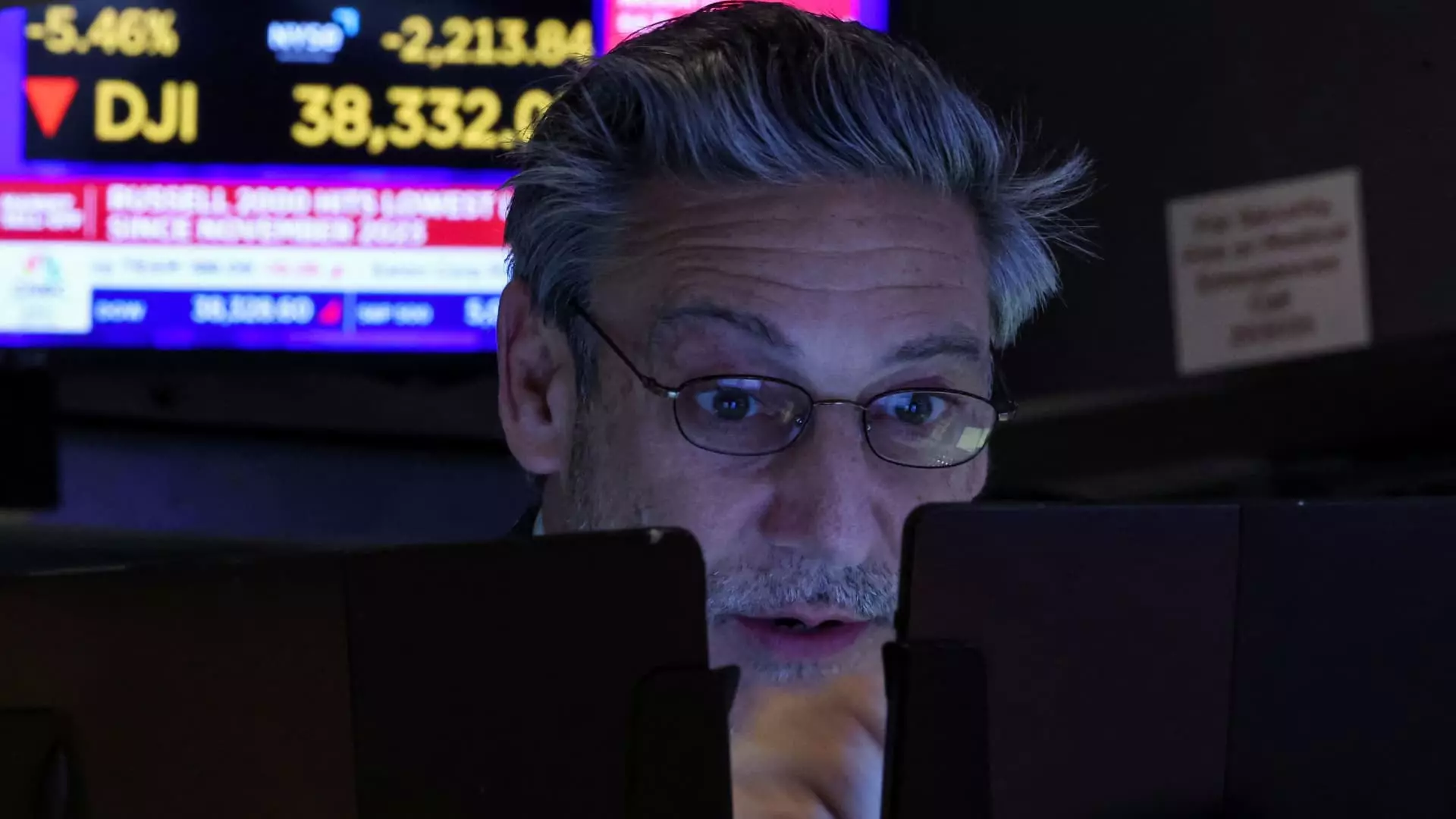In the high-stakes world of stock trading, significant events such as rapid declines in stock prices force exchanges to take drastic measures. Trading halts serve as a pause button on a game that too often leans towards chaos. As markets become jittery—often influenced by external factors like geopolitical tensions or national policy changes—exchanges step in to restore a semblance of order. It’s a strategic decision designed to prevent a modern financial apocalypse, reminiscent of the infamous crashes that have riddled Wall Street history.
The underlying principle of these halts is clear: allow investors to absorb shocking news and theoretically make more rational decisions. This was evident during the tumultuous period around March 2020 when the COVID-19 pandemic sent markets spiraling into uncertainty. Similarly, current pressures—largely stemming from heightened trade tensions and tariffs under policies introduced by previous administrations—signal an urgent need to foster stability amid fears of economic turmoil.
The Unfolding Crisis: Rising Tensions and Market Instability
Recently, the landscape has shifted considerably as surprising tariff hikes implemented by the Trump administration reignited worries about a trade war. The immediate aftermath saw futures tied to indexes like the S&P 500 plummeting overnight, indicating a broader sentiment of anxiety among investors. What this reflects is not merely fear; it’s a profound mistrust of stability in a market that was already teetering.
On a typical trading day, the U.S. stock market operates under the assumption of predictability, with patterns and trends that active traders attempt to capitalize on. However, with futures markets flashing red and suggestive of a significant downturn, the “limit down” levels become critical. For instance, a 7% decline in the S&P 500 futures triggers an automatic pause in trading, providing a brief window for reflection before the panic escalates.
While this may seem like a safety net, it also brings to light an inconvenient truth: once a market enters a state of freefall, the infrastructure designed to stabilize it might, paradoxically, delay recovery. As the Russell 2000 futures grazed their threshold overnight, and trading came to a halt, one must wonder whether such interruptions genuinely help or simply defer the inevitable reckoning.
Market Metrics and Disturbing Trends
Recent days have been alarmingly indicative of a precarious financial climate. The S&P 500’s near 6% decline not only marks its worst day since COVID-19’s onset but serves as a stark reminder of just how quickly sentiments can shift. Similarly, the Dow Jones Industrial Average experienced its most significant one-day drop since mid-2020, exacerbating fears of an impending market collapse.
The data speaks volumes: as the Nasdaq Composite tumbles further into bear territory, down over 20% from its peak, the implications of such swings are dire. When examining these benchmarks, we cannot overlook what lies beneath the surface—investor confidence takes a brutal toll with each successive decline. The gulf between past highs and recent lows grows like a chasm, sparking widespread unease.
Let’s examine the threshold levels for the circuit breakers: Level 1 at approximately 4,718, Level 2 at 4,414, and Level 3 at 4,059. Each decrease in these numbers serves not merely as a technical indicator, but as a psychological barometer of market sentiment. With the S&P 500 sitting 17% below its historical apex, it raises an unavoidable question: how much lower can it go before a systemic crisis ensues?
The Implications of Systemic Risk
The reality is that the stock market operates as a microcosm of the broader economy, reflecting not just corporate performance but national sentiment and global dynamics. A rapid descent can trigger a domino effect, leading not only to investment losses but also heightened unemployment rates and diminished consumer spending, contributing to an economic spiral. The ramifications of arbitrary monetary policy, unchecked tariffs, and sporadic trading halts increase vulnerability across sectors.
As someone who strongly believes in a center-right liberal approach to economic policy, it’s essential to confront the potential fallout of current practices with candidness and urgency. If we continue down this path—relying on ad hoc remedies to fix systemic issues—the supply chain disruptions and inflationary pressures will only compound. Investors are right to be disconcerted, and so should policymakers who play a pivotal role in steering the economy through these choppy waters.

